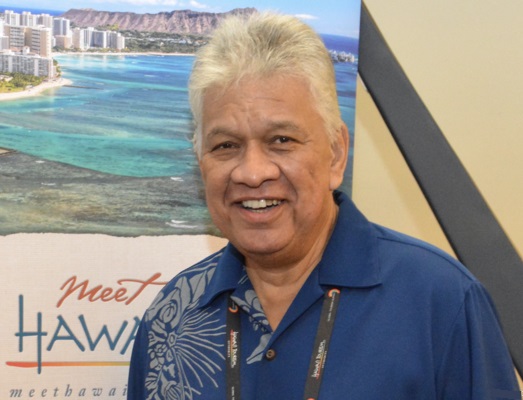Native Hawaiian Hawaii Tourism Authority Chief John De Fries lives his dream of mālama and Aloha, but it may not only be unrealistic but could turn into a nightmare for the travel and tourism industry of the 50th US State.
Native Hawaiian Hawaii Tourism Authority Chief John de Fries has been setting the future for Hawaii’s largest industry since August of 2020
In less than two years, he managed to have the Hawaii Visitors and Convention Bureau replaced by a Native Hawaiian Non-Profit organization Council for Native Hawaiian Advancement most people had never heard about before.
This nonprofit was awarded the full 100 million Dollar tourism marketing contract. The final determination is currently debated in court.
This non-profit never had a mandate or intention to promote the States largest industry, tourism, but this is a dream come true for the native Hawaiian community in the Aloha State. The reality is that tourism is a for-profit business.
Tourism Associations and many stakeholders are silent, bracing, or maybe ready to pack up or give up.
John de Fries for HTA, the Council for Native Hawaiian Advancement, never responded to a request for an interview ever since John de Fries took the helm of this taxpayer-funded state entity.
Finnpartners, the PR agency representing HTA, has also never responded to eTurboNews request for interviews. Elected officials also don’t respond to requests by constituents.
John de Fries and his friend have a clear path to make their dream of a new vision for Hawaii Tourism a reality.
The oldest Hawaiian chants describe the Hawaiian Islands, the spirits that inhabit them, the forces of nature that shaped them, and all the living things upon them as inextricably connected. This sense of connection is the foundation of Hawaiian culture: understanding that we all have a mandate to mālama, to care for our environment and one another.
Today, Hawaiian culture may hold many of the answers sought in a rapidly changing world. The spirit of aloha – being in the presence of and sharing the essence of life – teaches us lessons of peace, kindness, compassion, and responsibility to future generations. These lessons are expressed through chant, music, hula, arts and cultural practices, and the warm, genuine greetings hallmark of Hawaiian hospitality.
HTA’s new message to visitors is: “The Hawaiian Islands itinerary that can change your life isn’t found in guidebooks. Because what makes the Hawaiian Islands truly special is not only our stunning natural beauty or vibrant culture – it’s the deeply rooted relationship that connects them.
This is all wonderful, but the “sad” reality in the State of Hawaii is that tourists are now coming back after COVID. New low-cost flights are running full regardless of the attempts by HTA that low-cost tourists are not a priority.
Visitors want to have a good time, sand and sea, and some may want to experience the culture, and hula lessons and others may prefer the Blue Hawaiian cocktail or Maui Craft beer. A few may want to know about the rich Hawaiian culture and book a spiritual Hawaiian Culture tour.
Visitors are adults and should be able to make this decision independently.
Paying to go to a beach, paying hundreds of dollars a night for a run-down non serviced hotel room, missing entertainment, a tourism board that wants them to study the culture before getting on the plane – is a reality.
What about if visitors that came to Hawaii with high expectations realized the Aloha State is not what it once was? It may be the last trip for many returning to Hawaii in big numbers. After dreaming about a Hawaii vacation during more than two years of COVID lockdowns, it doesn’t take a lot of advertising to be encouraged for a first trip, but what about returning for a future second or third trip?
The reality is high spending tourists are not returning , and the international inbound market from main source destinations like Japan is still not coming back in large numbers. Chinese travelers the industry banked on for years are not returning due to political reasons.
Instead, competing destinations in Asia and as far as the Caribbean are very active to attract former Hawaii visitors to their beaches.
The Cayman Island Tourism Minister, the new head of the Caribbean Tourism Organization, made it very clear when announcing a new Cayman Airlines nonstop flight to Los Angeles. He pointed out this flight from Los Angeles to the Cayman Islands is shorter than going from LAX to Honolulu.



